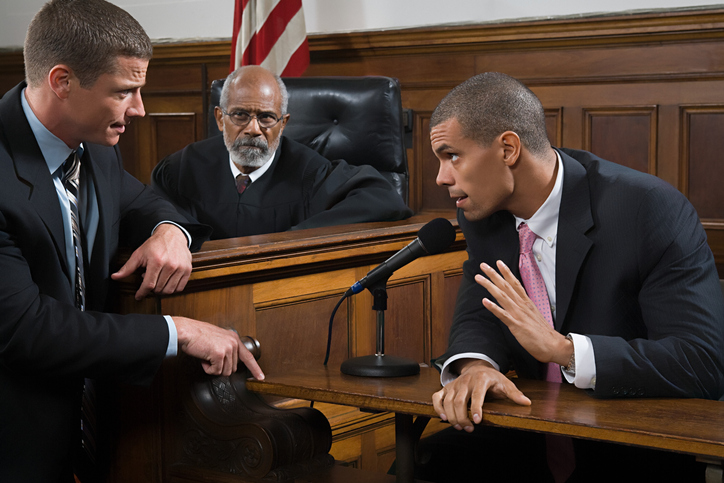How Accident Lawyers Prepare Clients For Court Hearings: A Comprehensive Guide
How Accident Lawyers Prepare Clients for Court Hearings: A Comprehensive Guide
Related Articles: How Accident Lawyers Prepare Clients for Court Hearings: A Comprehensive Guide
- The Importance Of Accident Lawyers In High-Stakes Litigation
- Top Legal Strategies Used By Experienced Accident Lawyers
- How To Avoid Common Mistakes When Hiring An Accident Lawyer
- Why Accident Lawyers Are Essential For Severe Injuries
- Why You Need An Accident Lawyer For Long-Term Injury Claims
Introduction
Join us as we dive into the essential aspects of How Accident Lawyers Prepare Clients for Court Hearings: A Comprehensive Guide. Through this article, we aim to engage, inform, and inspire you with comprehensive information and practical perspectives.
Video about How Accident Lawyers Prepare Clients for Court Hearings: A Comprehensive Guide
How Accident Lawyers Prepare Clients for Court Hearings: A Comprehensive Guide

Preparing a client for a court hearing in an accident case is a multifaceted process requiring meticulous planning and comprehensive communication. The lawyer’s role extends far beyond simply presenting the case; it involves guiding the client through the often-daunting experience of testifying, ensuring they understand the legal proceedings, and fostering confidence in their ability to effectively communicate their experience. This preparation is crucial for achieving a favorable outcome. This article will delve into the various stages of this preparation, highlighting the crucial elements and strategies employed by experienced accident lawyers.
1. Understanding the Client’s Case and Emotional State: The Foundation of Preparation
Before any strategic planning can commence, the accident lawyer must thoroughly understand the specifics of the client’s case. This includes a detailed review of all relevant documentation: police reports, medical records, insurance claims, witness statements, and photographs. Equally important is assessing the client’s emotional state. The trauma of an accident can leave lasting psychological effects, influencing their ability to recall events accurately and testify confidently. A sensitive and empathetic approach is crucial here. The lawyer needs to build a strong rapport, creating a safe space for the client to openly discuss their experiences, anxieties, and expectations. This initial understanding forms the bedrock upon which the entire preparation strategy is built. Open communication, active listening, and a non-judgmental attitude are vital at this stage.
2. Reviewing the Case Timeline and Key Events: Establishing a Narrative
Once the lawyer has a comprehensive grasp of the case details, the next step involves meticulously reconstructing the timeline of events leading up to and following the accident. This chronological reconstruction helps establish a clear and consistent narrative. The lawyer works with the client to identify key events, focusing on details that support their version of the incident. This may involve revisiting the scene of the accident (if possible and safe), reviewing photographs and videos, and meticulously examining medical records to correlate injuries with the accident’s impact. Inconsistencies in the client’s statements need to be addressed proactively, as these can significantly weaken their credibility during cross-examination. This meticulous review helps to anticipate potential challenges and formulate effective counter-arguments.
3. Witness Preparation: Corroborating the Client’s Testimony
In many accident cases, witness testimony plays a crucial role. The lawyer will identify and interview potential witnesses, preparing them to testify in court. This preparation involves educating them about the court process, advising them on appropriate courtroom behavior, and practicing their testimony to ensure consistency and clarity. The lawyer will guide witnesses to focus on factual details and avoid speculation or emotionally charged statements. The aim is to ensure that witness testimony corroborates the client’s account, strengthening the overall case. This preparation not only ensures the witnesses are well-informed but also prevents inconsistencies that could undermine the credibility of the client’s testimony.
4. Mock Cross-Examination: Preparing for Adversarial Questioning
One of the most crucial aspects of client preparation is simulating the experience of cross-examination. The lawyer will conduct a mock cross-examination, posing challenging and potentially aggressive questions that the opposing counsel might ask. This allows the client to anticipate difficult questions and practice formulating clear, concise, and accurate responses. The lawyer will also provide guidance on handling stressful situations, maintaining composure, and avoiding emotional outbursts. This process is invaluable in building the client’s confidence and preparing them for the pressure of the courtroom. The mock cross-examination also helps identify weaknesses in the client’s narrative or areas where further clarification is needed.
5. Understanding Courtroom Etiquette and Procedure: Navigating the Legal Landscape

The courtroom environment can be intimidating for those unfamiliar with legal proceedings. The lawyer will thoroughly explain the courtroom etiquette, procedures, and the roles of different participants. This includes explaining the judge’s role, the jury’s function (if applicable), and the process of giving testimony. The client will be educated on proper courtroom behavior, such as addressing the judge appropriately, avoiding interruptions, and maintaining respectful demeanor. Understanding these procedures reduces anxiety and allows the client to focus on presenting their case effectively. This understanding minimizes the risk of unintentional errors that could negatively impact the case.
6. Presenting Evidence Effectively: Supporting the Narrative with Tangible Proof
The lawyer will work with the client to gather and organize all relevant evidence, ensuring it is presented in a clear and concise manner. This may involve photographs, medical records, repair bills, witness statements, and any other documents supporting the client’s claim. The lawyer will explain how this evidence will be used to support their narrative and strengthen their case. The client will be instructed on how to identify and explain the significance of each piece of evidence during their testimony. This ensures the evidence is not only presented but also understood and appreciated by the judge or jury.
7. Managing Expectations: Understanding Potential Outcomes
Realistic expectations are essential for a positive outcome. The lawyer will discuss the potential outcomes of the case, including the possibility of a settlement or a trial. This transparent communication helps the client manage their expectations and prepare for various scenarios. The lawyer will explain the strengths and weaknesses of the case, emphasizing the importance of honesty and consistency in their testimony. Managing expectations reduces the risk of disappointment and helps the client approach the hearing with a clear understanding of the possibilities.
8. Developing a Strong Communication Strategy: Conveying the Truth Effectively
Effective communication is paramount. The lawyer will work with the client to develop a clear and concise communication strategy, ensuring their testimony is accurate, truthful, and persuasive. This involves practicing their responses to anticipated questions, focusing on clarity and avoiding jargon or overly technical language. The lawyer will also help the client manage their emotions, ensuring their testimony is delivered in a calm and controlled manner. This refined communication strategy ensures the client’s story is not only heard but also understood and believed.
9. Post-Hearing Support: Addressing Post-Trial Emotions
Even after the hearing concludes, the lawyer’s role continues. They provide post-hearing support, addressing any lingering anxieties or concerns the client may have. This may involve discussing the outcome of the case, explaining any further legal steps, and offering emotional support. This continued support is vital in ensuring the client feels understood, respected, and supported throughout the entire legal process. This ongoing care demonstrates the lawyer’s commitment to their client’s well-being, beyond the legal aspects of the case.
Frequently Asked Questions (FAQs)
Q: How long does it take to prepare for a court hearing?
A: The preparation time varies depending on the complexity of the case and the client’s needs. It can range from several weeks to several months.
Q: What if I forget something during my testimony?
A: Your lawyer will be there to help you. If you forget something, you can ask for a moment to collect your thoughts or refer to your notes.

Q: What should I wear to court?
A: Dress professionally and conservatively. Avoid anything too casual or flashy.
Q: Can my lawyer tell me what the judge will decide?
A: No, your lawyer cannot predict the judge’s decision. They can, however, help you understand the potential outcomes and prepare you for various scenarios.
Q: What if I’m nervous?
A: It’s perfectly normal to be nervous. Your lawyer will help you manage your nerves and guide you through the process. Deep breathing exercises and visualization techniques can also be helpful.
Q: What happens if I make a mistake during my testimony?
A: Mistakes happen. Your lawyer will work to mitigate any negative impact. Honesty and consistency are key.
Q: What if I can’t afford a lawyer?
A: Legal aid organizations and pro bono programs may be able to assist you. You should explore these options.
Q: Can I bring someone to court with me for support?
A: Usually, yes. Check with your lawyer beforehand to confirm the court’s policy.
Q: What if I don’t speak English fluently?
A: Your lawyer can arrange for an interpreter to assist you during the proceedings.
Q: How much will this cost me?
A: The cost varies depending on the lawyer and the complexity of the case. Discuss fees and payment plans with your lawyer upfront.
Closure
We hope this article has enriched your understanding of How Accident Lawyers Prepare Clients for Court Hearings: A Comprehensive Guide. We look forward to bringing you more engaging content in the future. See you in our upcoming discussions!



